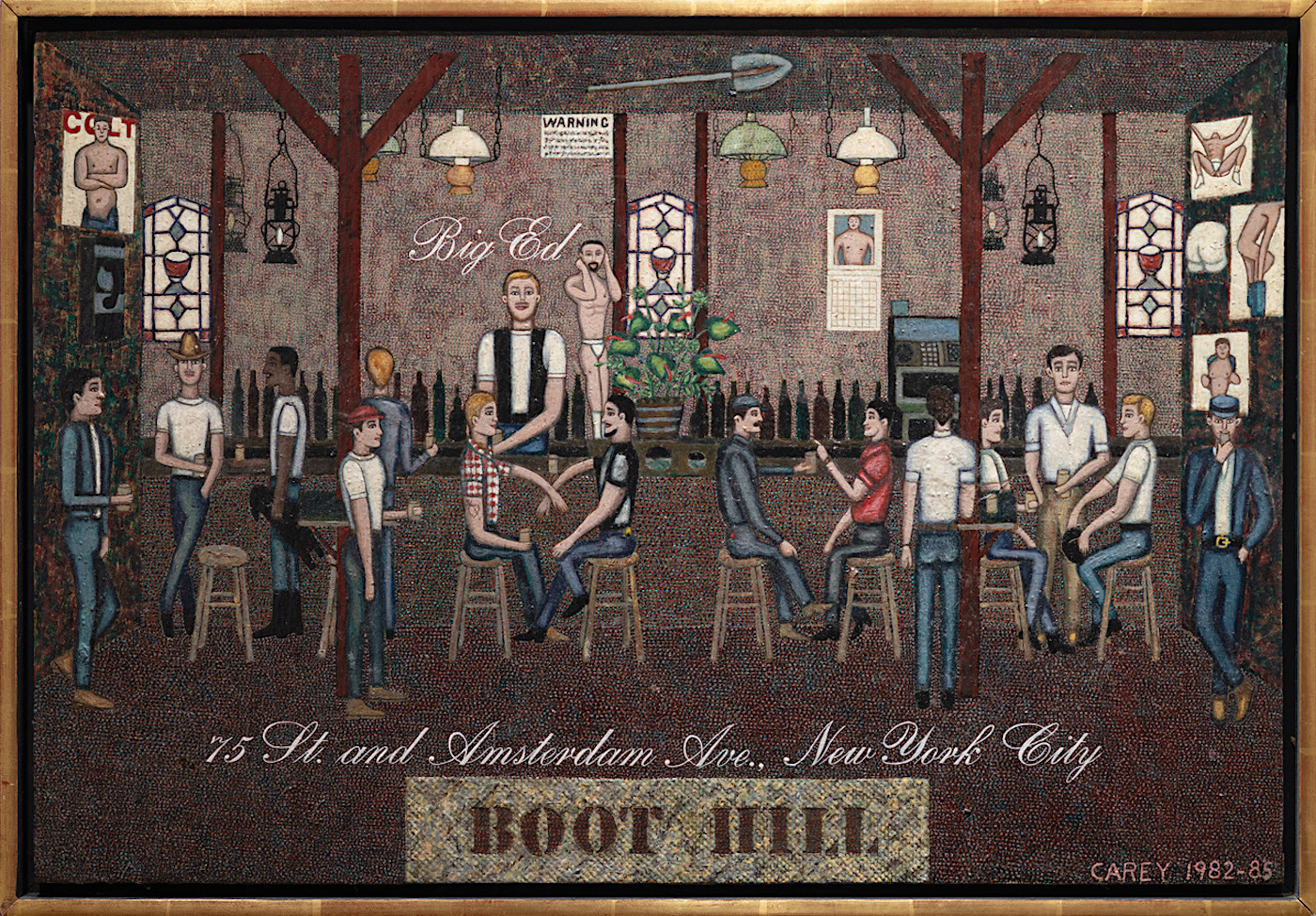Despite the never-ending information available on the internet, there are not many details about artist Edward “Ted” Fawcett Carey. A meticulous painter from Chester, Pennsylvania, he has mostly been recognized by scholars for the close friendship he developed with Andy Warhol after moving to New York City to pursue a graphic design career. However, Carey’s own artwork — a series of American folk art paintings created during the last decade of his life depicting aspects of New York’s gay community — has often been overlooked. In 1985, one week following his death from AIDS, ArtViews Gallery held a memorial show featuring 14 of his paintings, but there have not been any exhibitions of the artist’s work since.
Nearly four decades later, nine paintings from Carey’s body of work were most recently spotlighted at East Hampton’s Guild Hall this summer. Curated by Matthew Nichols, Ted Carey: Queer as Folk explored the artist’s life through his elaborate depictions of Manhattan’s historically gay spaces, such as the now-defunct bar Boot Hill and cultural institutions including the Lincoln Center for the Performing Arts and the Metropolitan Museum of Art. The exhibition also offered a glimpse into Carey’s social circle through a set of homages to gay peers including Warhol, Broadway costume designer Miles White, and photobooth artist Herman Costa.

Nichols explained that he initially came across Carey as “a footnote in the Warhol literature” while writing his dissertation on the Pop artist’s early career three decades ago. But it wasn’t until after the pandemic, when Guild Hall digitized its permanent collection, that Carey returned to Nichols’s attention. After Carey’s death, his partner Tito Spiga had arranged a bequest of his artwork to the arts center; in a full-circle moment, Carey’s paintings were displayed in Guild Hall’s exhibition space named after Spiga.
Nichols told Hyperallergic that he was drawn to the artist’s use of the genre’s “pictorial language” to capture what were modern-day moments in New York’s queer scene. “There’s this deliberate stylization of the figures and this sort of stacked, often symmetrical arrangement of the compositions,” Nichols explained. He also pointed to Carey’s emphasis on two-dimensionality in the works, deliberately omitting shadows and casting scenes and characters in evenly distributed light, observations also noted in an essay he wrote for the exhibition.

While it is unclear what Carey’s personal motivations were for using this visual vernacular, Nichols pointed out that the artist’s work subverts the genre’s conventions in its centering of the gay community members he knew or admired and the queer city spaces he frequented. In one example, Nichols described how Carey’s painting of Boot Hill serves as a type of “document of a subculture” from the time period in its rendering of the bar’s Western-themed decor and denim-wearing patrons.
“Another aspect that I think is in that painting is the gentrification of the Upper West Side, because there’s only one person of color in the painting, whereas the rest of the figures are White men,” Nichols added.
Although this exhibition only showed a portion of Carey’s work, the curator said that he has also identified several other paintings that he is still tracking down in public and private collections to hopefully piece together a more comprehensive understanding of the artist.
“This feels like it’s just the start,” Nichols told Hyperallergic.




This article, part of a series focused on LGBTQ+ artists and art movements, is supported by Swann Auction Galleries. Swann’s upcoming sale “LGBTQ+ Art, Material Culture & History,” featuring works and material by Dinh Q. Le, Harmony Hammond, Tom of Finland, and many more will take place on August 22, 2024.

